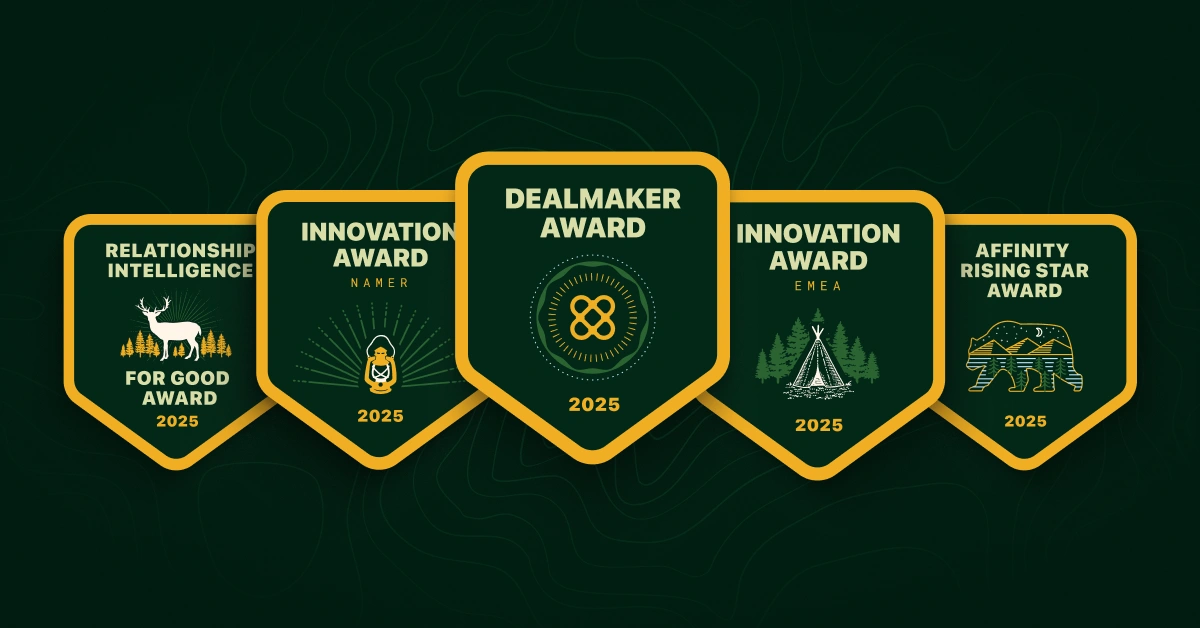Finding and funding quality deals has never been more complex.
With more VCs going after a smaller pool of founders, dealmakers are working harder to break through the noise. According to Affinity’s recent survey of 700+ dealmakers, people are spending an additional 10 hours per deal than they did a year ago—which also means they’re looking for ways to cut down on that labor while still landing high-quality deals.
Peter Mitchell, Data Scientist at the University of Oxford and Head of Origination at Future Planet Capital, has spent three years refining a Global Scoring System that centralizes and analyzes investment data within three arms of business at his firm. These are a $120 million pre-seed fund in partnership with the British government, high-growth sector investments that focus on creating quality jobs for the future, and a global venture wing focused on investments in health, climate change, and sustainable growth.
Mitchell was graciously transparent in sharing his development process with us, including steps for buy-in and the tech stack he leaned on to get it done. Watch the full conversation or keep reading for the highlights, with time-stamps to help you dive deeper at key moments.
Getting buy-in with Google Sheets while building an empirical scoring system
When Mitchell was tasked with investment scoring development in 2021, Future Planet Capital had 500 companies in their pipeline and were quickly expanding that number. “We needed an accessible system that would improve decision making, not just act as an information repository,” Mitchell says. “So I built a signal finder that highlights with precision which 10 companies we should spend the majority of our time on, out of the 100 we’ve been alerted to in any given week.”
Mitchell started by pulling in data from Tracxn and Crunchbase—the cleanest data sources that could scale without the cost being prohibitive—then pushing it into Python, uploading it to an Excel file, and presenting it with Google Sheets. The familiarity and flexibility of Google Sheets meant he could get quick feedback from others at the firm and prove the value of data before asking for more budget for a complete tech stack.
While running this feedback loop on software solutions and data presentation, Mitchell was busy developing his actual scoring system with empirical data. “Still pushing data into Google Sheets, I did a survey of academic literature to identify successful companies based on features backed by empirical evidence,” he says. “I wanted to be sure that we were accurate when we said one company was high scoring versus another that was low scoring.”
Outgrowing Google Sheets and graduating to a full tech stack
While Google Sheets allowed for a lot of flexibility, it wasn’t scalable. So as Mitchell expanded his data sources to include LinkedIn and Beauhurst (a UK provider of market data for private companies), he searched for a CRM that could act as a good front-end for all the data he was putting to good use.
“So what we ended up with,” Mitchell says, “was a main juggernaut of a scoring system and a front end that more people could access, with a way to present projects that meet the specific thesis of certain funds.”
In its current iteration, Mitchell’s investment scoring and data presentation tech stack includes:
Saving time with scoring translation and accessibility
When Mitchell first started seeking buy-in for his scoring system and the tech stack that came with it, there was some pushback from colleagues who liked doing things their own way. “We have people who have been VCs for a long time,” he says, “and they like to ‘smell a good deal.’ But full transparency about how we designed the scoring system helped them understand the value of it. They were also impressed with some of the data they thought was impossible to collect or identify.”
What ultimately proved the value of the system to the entire firm was Affinity’s accessible front end, which turned data into action. “With Affinity all our insights are in a place where people can move through the creation of lists, templates, views, etc.,” Mitchell says. “Now our inbound leads are coming into a single place with connections to email templates that immediately respond to them if they' meet our thesis, or politely reject them or cancel our engagement if they don't.”
Mitchell says Affinity’s largest value add is that the firm has been able to reduce wasted time on manual tasks. For example, they can organize a meeting with a founder for any member of their team in six clicks.
There was so much about this conversation we loved that we couldn’t fit into this recap, so we encourage you to watch our full conversation with Peter Mitchell here. You’ll learn more about how he:
- Designed his Global Scoring System
- Proved the value of lead scoring and sophisticated data analysis solutions
- Made a complex lead scoring system accessible and useful for his entire firm using Affinity







.png)


.webp)
.webp)
